After the Austro-Hungarian Compromise of 1867, Budapest became the political, economic, cultural and administrative centre of the country. Thanks to this, more and more Unitarian families from Transylvania settled temporarily or permanently in Budapest. The Unitarian Bishop József Ferencz entrusted the pastor Károly Derzsi with the creation of a parish to serve their religious needs.
The Budapest parish was founded on 14 April 1881 as a congregation of the Hungarian Unitarian Church based in Kolozsvár [Cluj Napoca]. At first, they held their services in the hall of the Evangelical High School in Deák Square, and in 1890 the parish church was consecrated at the corner of Alkotmány Street and today's Nagy Ignác Street. In addition to the church, community rooms and flats were created in the building built according to the plans of Samu Pecz.
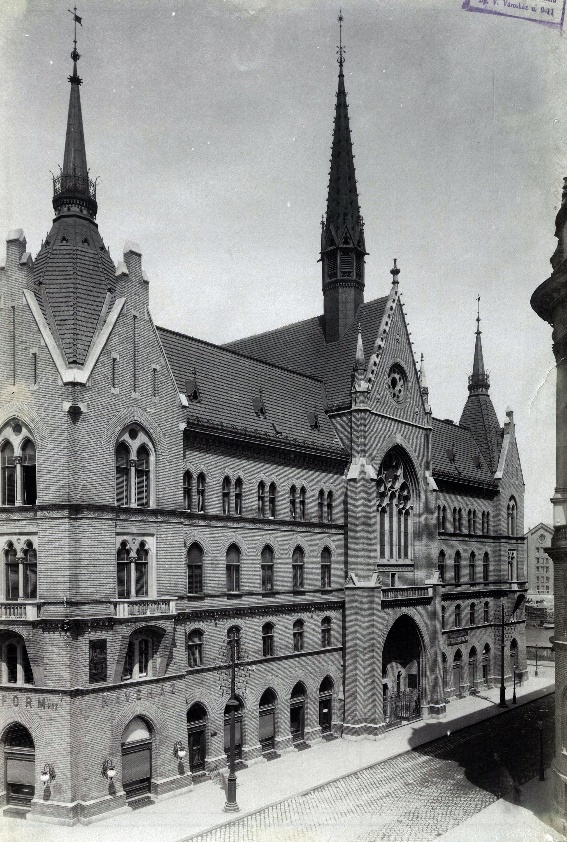
The Unitarian Church in Nagy Ignác Street (Photo: Fortepan/Budapest Archives, Reference No.: HU.BFL.XV.19.d.1.07.072)
After World War I, among the refugees from Transylvania, there were an increasing number of Unitarians, for whom the Nagy Ignác Street church proved to be too small. In 1921, Gábor Csiki, a pastor from Kolozsvár [Cluj Napoca], went on a tour in England, where, representing Unitarian interests, he put forward the idea of a Unitarian Mission House designed on a foreign model.
In 1922, the British and Foreign Unitarian Society bought two-thirds of the building at 3 Rákos Street for the purpose of a mission house. The following year, the second centre of the Unitarian community in the capital was officially opened. The building was originally built in 1899 as a residential house for construction contractor Ármin Gans. Until then, there was a small one-story house in its place, which became a literary connection in 1907, when Ferenc Molnár's novel, A Pál utcai fiúk [The Paul Street Boys], was published in book form. According to the story, the main character Ernő Nemecsek and his family lived in that old house.
In order for a prayer hall, pastor's residence, and a student dormitory for Unitarian university students to operate in this place, an architectural transformation almost fitting a novel was necessary, but the necessary financial cover was still lacking. Although both the government and the capital made promises, Gábor Csiki went on another fundraising tour to the United States in 1927, and the Budapest congregation started collecting money themselves. The action proved to be successful because in 1928 the church was able to entrust the preparation of the plans to the architects Zsigmond Gotthardt and Jenő Padányi Gulyás.
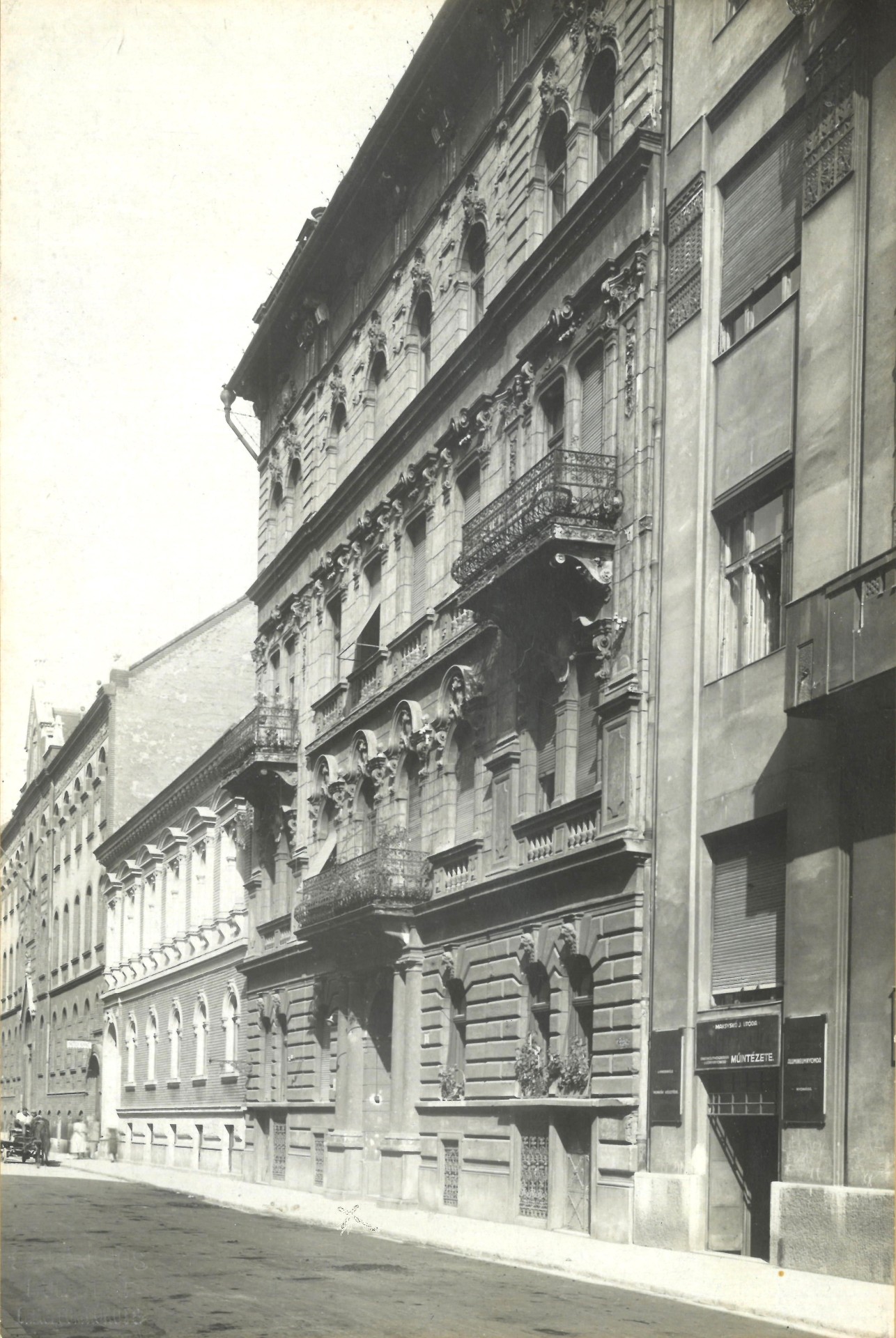
The original house in 1926 (private property)
During the reconstruction directed by the engineers Emil Méhes and György Méhes, the ground floor and the first floor of the rear tract of the courtyard were combined, and the entire 20-metre length of the central main wall was replaced, resulting in a 10-metre-wide, 8-metre-high, and 20-metre-long space.
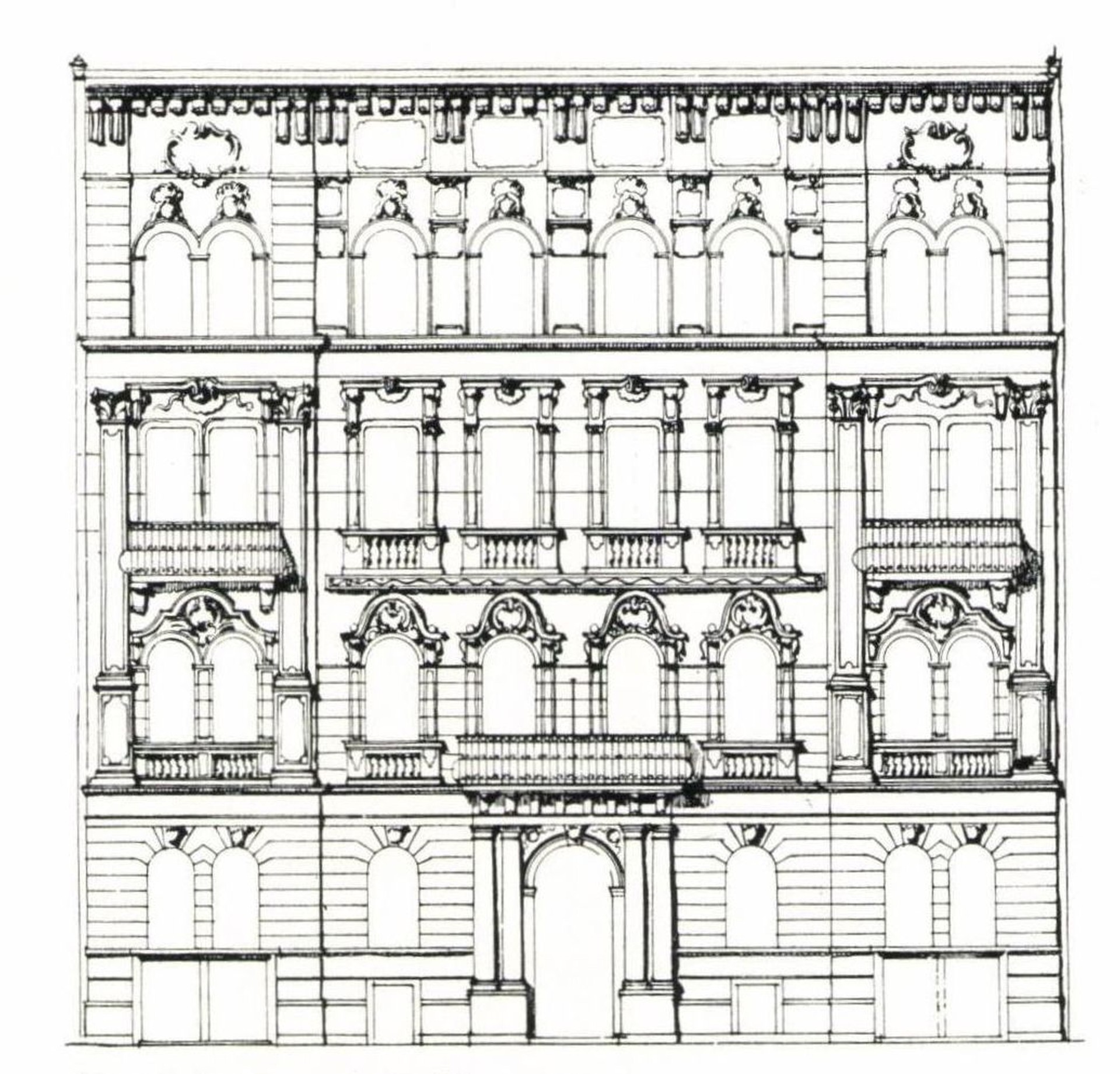
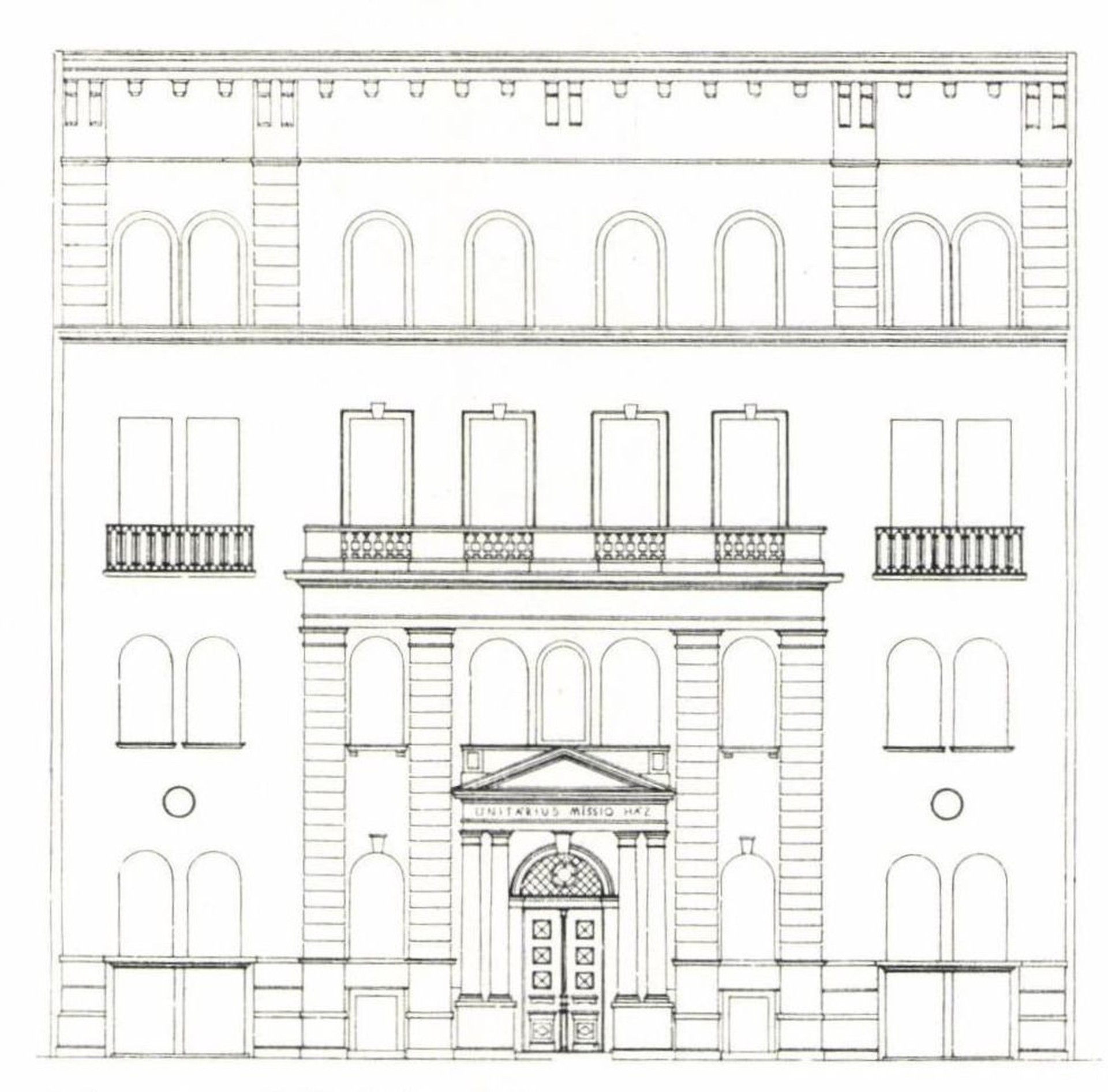
Section of the original and the converted facade (Source: Tér és Forma, Issue 3, 1929)
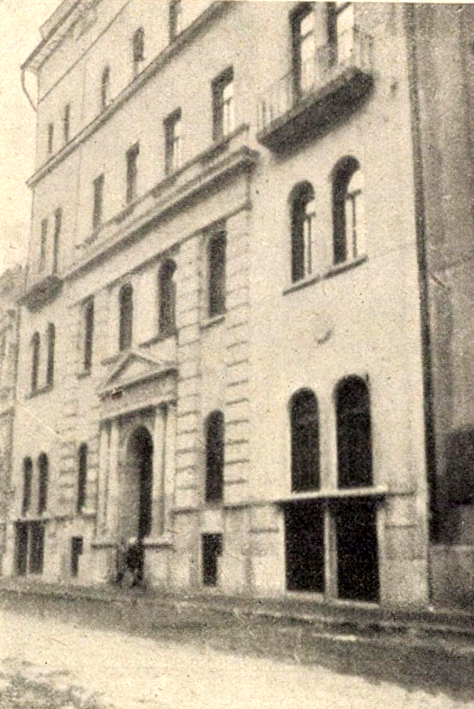
The facade of the converted house (Source: Magyar Mérnök- és Építész Egyelt Közlönye, 2 February 1930)
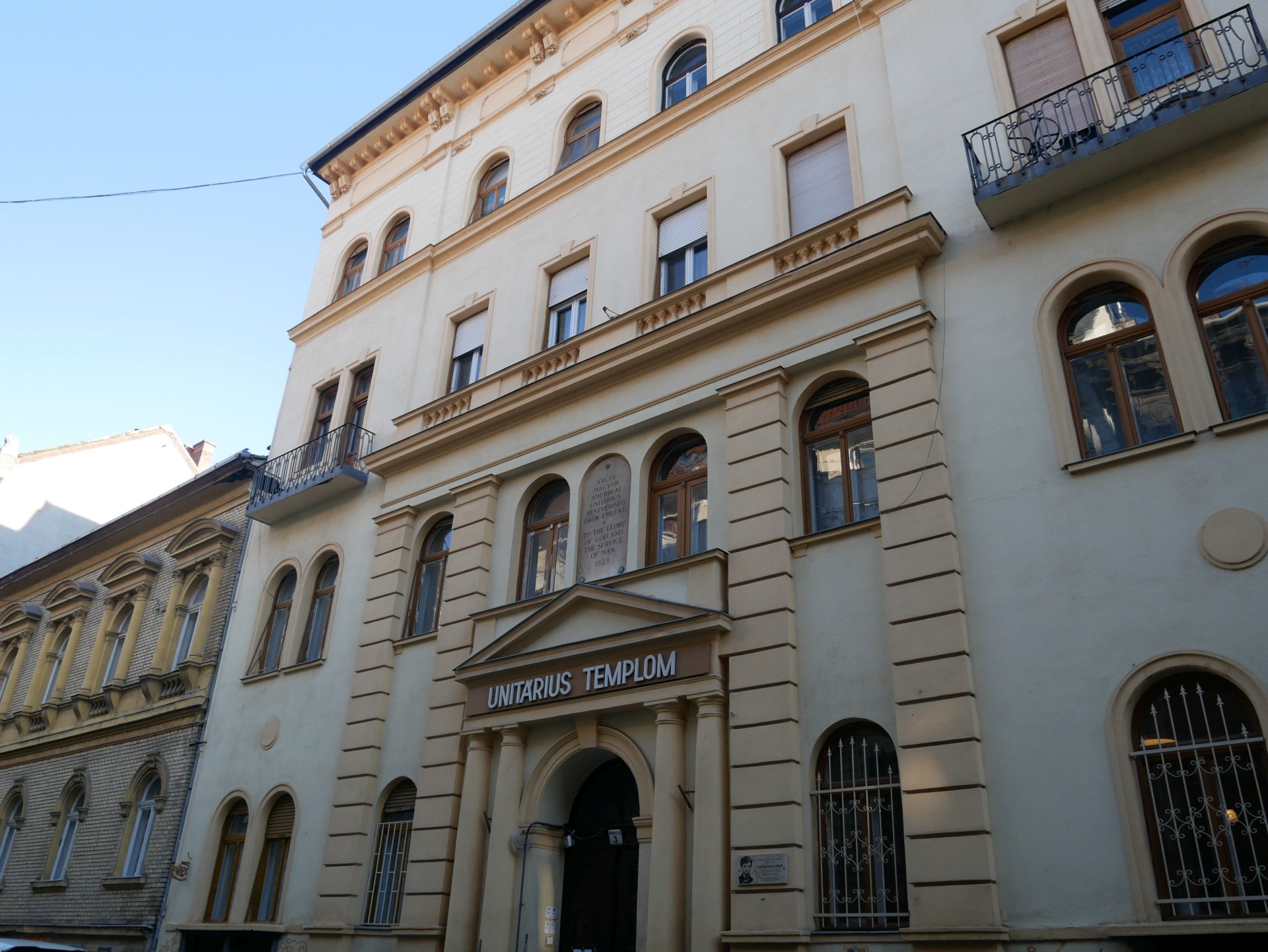
The facade of the house in January 2023 (Photo: Tímea Simon)
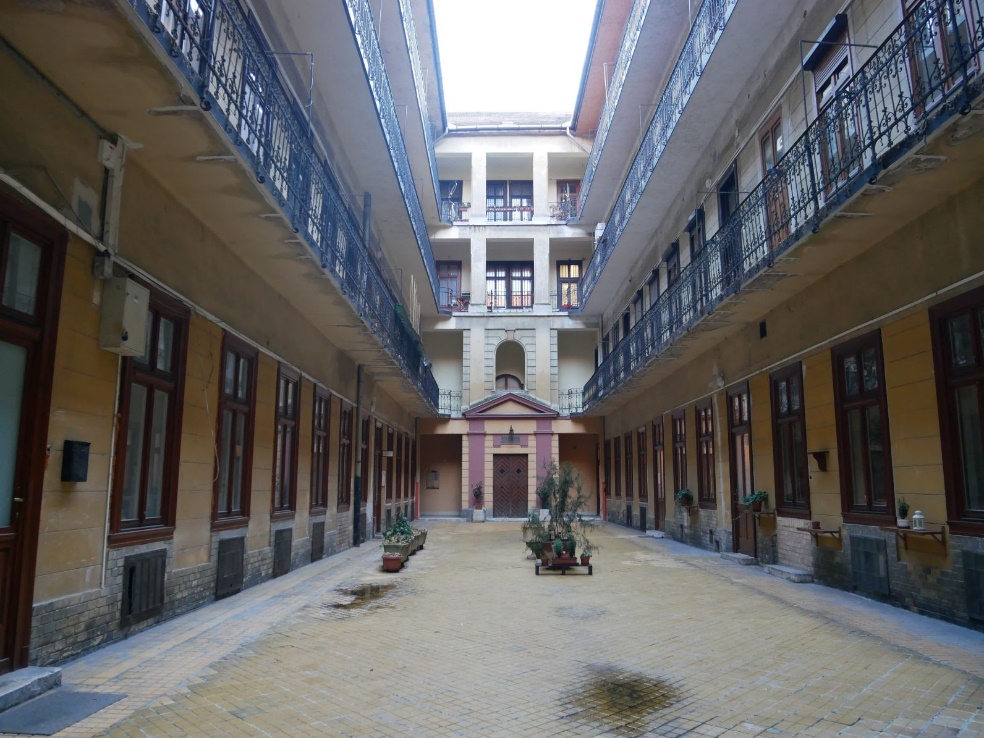
The courtyard of the house, the entrance to the church at the back (Photo: Tímea Simon)
The prayer hall was built on the ground floor and first floor of the rear part of the building. In order to have a room of the required size, all the partition walls here, the 20-metre-long intermediate main wall and the slab above the ground floor had to be demolished. The part of the central main wall above the hall was supported by a suitable substitute structure.
The execution was complicated by the fact that the people living in the flats on the 2nd and 3rd floors above the prayer hall did not move out even during the works. The central main wall was replaced by seven riveted iron brackets, each 1.10 metres high, placed every two and a half metres. The foundation of the reinforced concrete pillars was not an easy job either, because in order to achieve the central load, a new foundation had to be made outside and inside the old foundation, without disturbing it. Since the hall receives natural light from a narrow backyard, three large window openings were created on that side.
The result of the precise, careful, but challenging work was a puritanical but eye-catching church interior. The motifs of the wooden beamed, coffered ceiling, the patterns of the benches, doors and pulpit, the curved organ gallery, the carved wooden chandelier, the stylish fittings and the wooden upper window created a real Transylvanian atmosphere in the middle of the noisy metropolis. The reconstruction also affected the street front of the building, the designers replaced the old facade of the residential house, which was in need of repair anyway, with a simpler architecture.
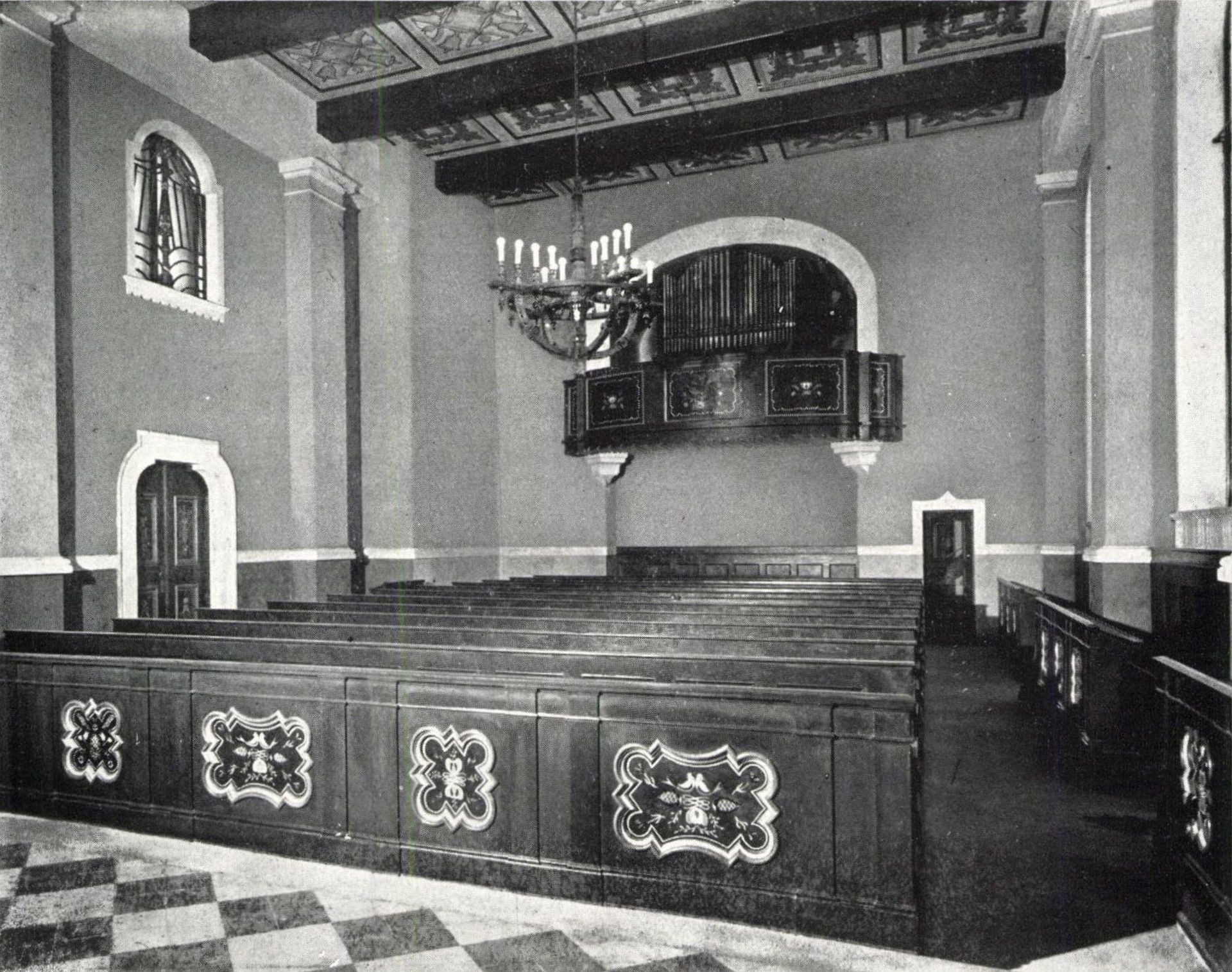
The church interior in 1929 (Source: Tér és Forma, Issue 3, 1929)
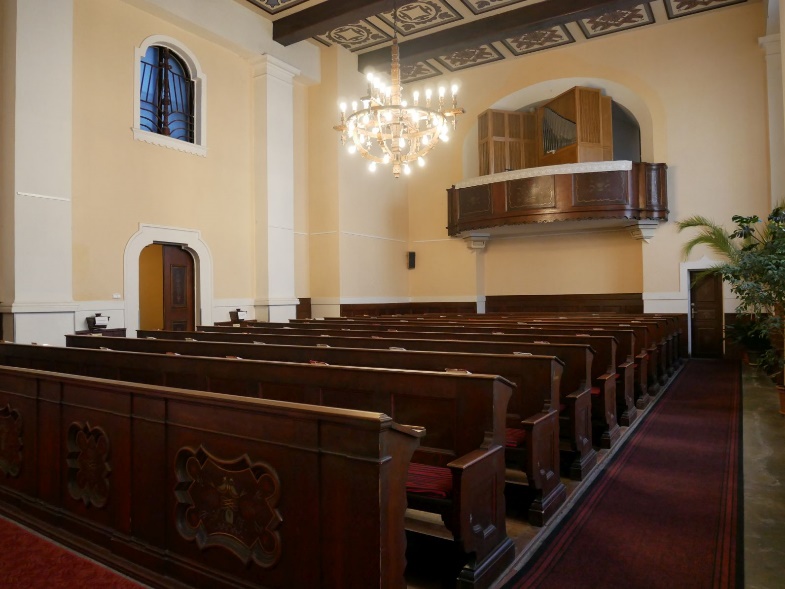
The church interior in January 2023 (Photo: Tímea Simon)
The new church was inaugurated on 10 February 1929, at which the government was represented by the Minister of Culture Kunó Klebelsberg and the capital by Mayor Ferenc Ripka. The church and the congregation had to deal with many difficulties in the following decades but also survived the nationalisation following the communist takeover and the scarcity of financial resources. After 1990, the church got several premises back, and in 2001 the Budapest Unitarian Parish officially split into two, the one on Hőgyes Endre Street took on the name Bartók Béla Unitarian Parish (Bartók converted to the Unitarian faith in 1916). Since then, it has been providing the conditions of religious life for the congregation of Ferencváros, Józsefváros, Újbuda, Csepel, Soroksár and Budafok-Tétény.
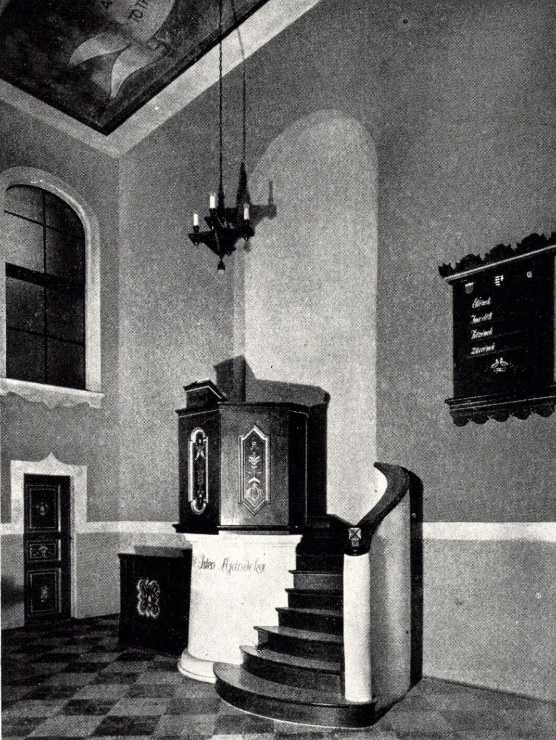
The pulpit in 1929 (Source: Tér és Forma, Issue 3, 1929)
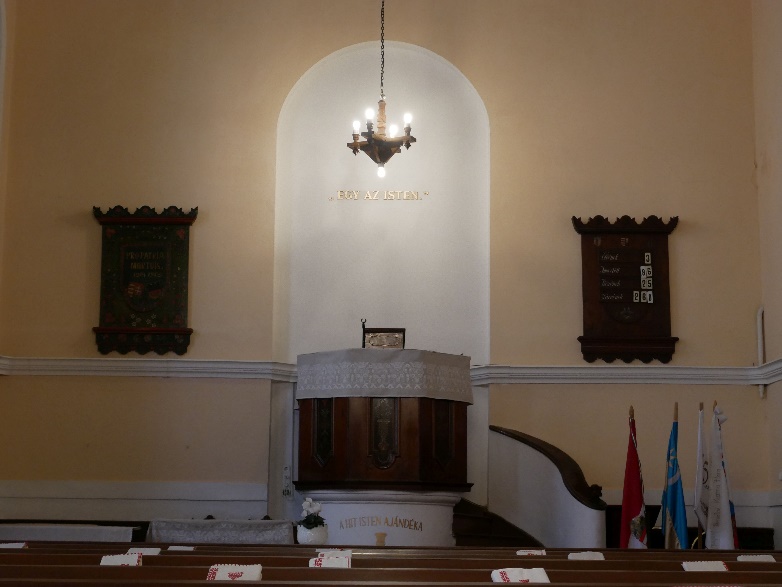
The pulpit in January 2023 (Photo: Tímea Simon)
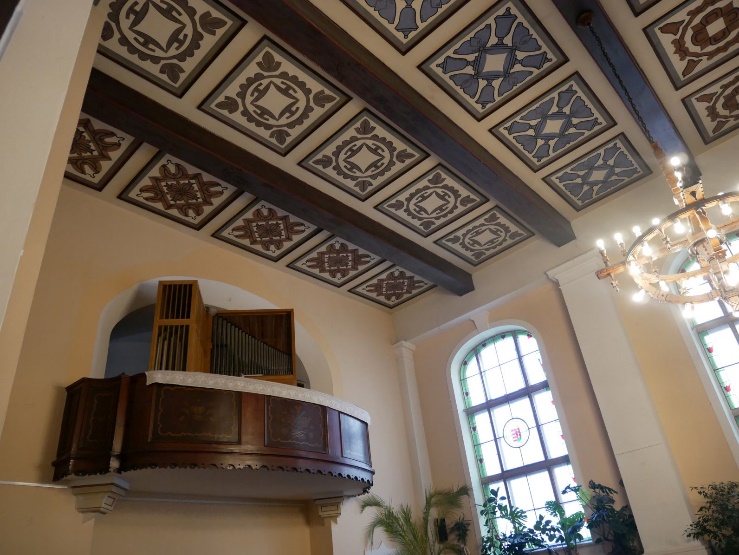
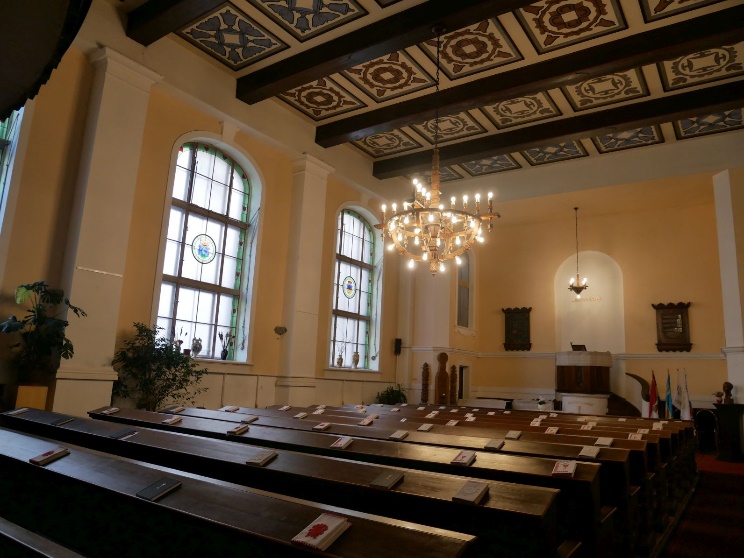
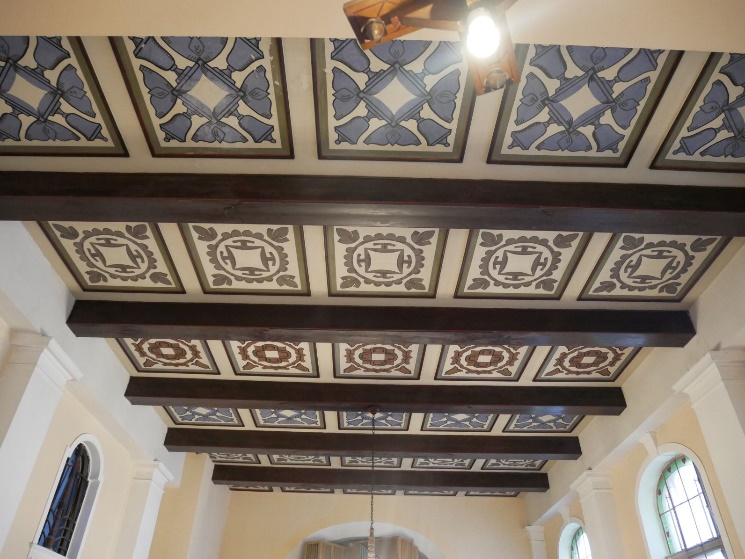
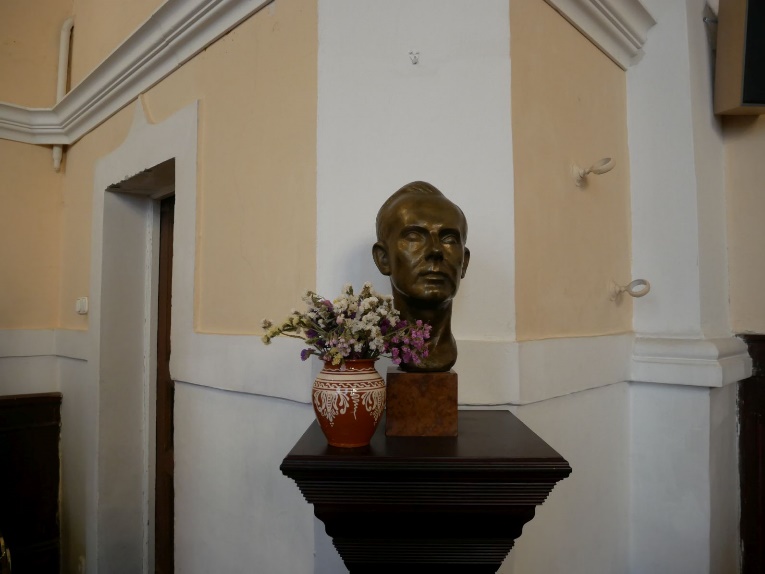
Parts of the church interior (Photo: Tímea Simon)
Since 2016, a special commemorative plaque can be seen at the entrance of the building. The sign draws the attention of visitors to the already-mentioned hero of Ferenc Molnár, Ernő Nemecsek, who was born 145 years ago.
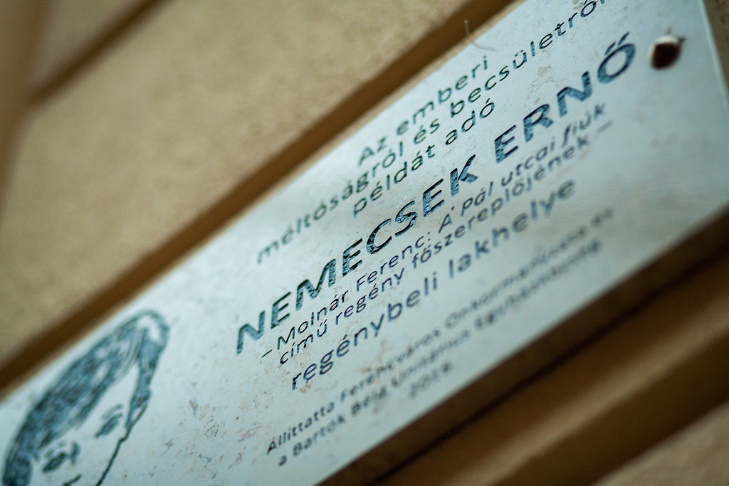
The memorial plaque (Photo: Tímea Simon)
The writer's imagination combined the specific locations and fictional characters and plot into a novel, and the memorial plaque, whose initiators were members of the Unitarian community, connects the specific atmosphere of the 1890s with the everyday life of the building that is still standing.
Cover photo: The Unitarian Mission House in Budapest opened 100 years ago in Hőgyes Endre Street, the facade of the house nowadays (Photo: Tímea Simon)

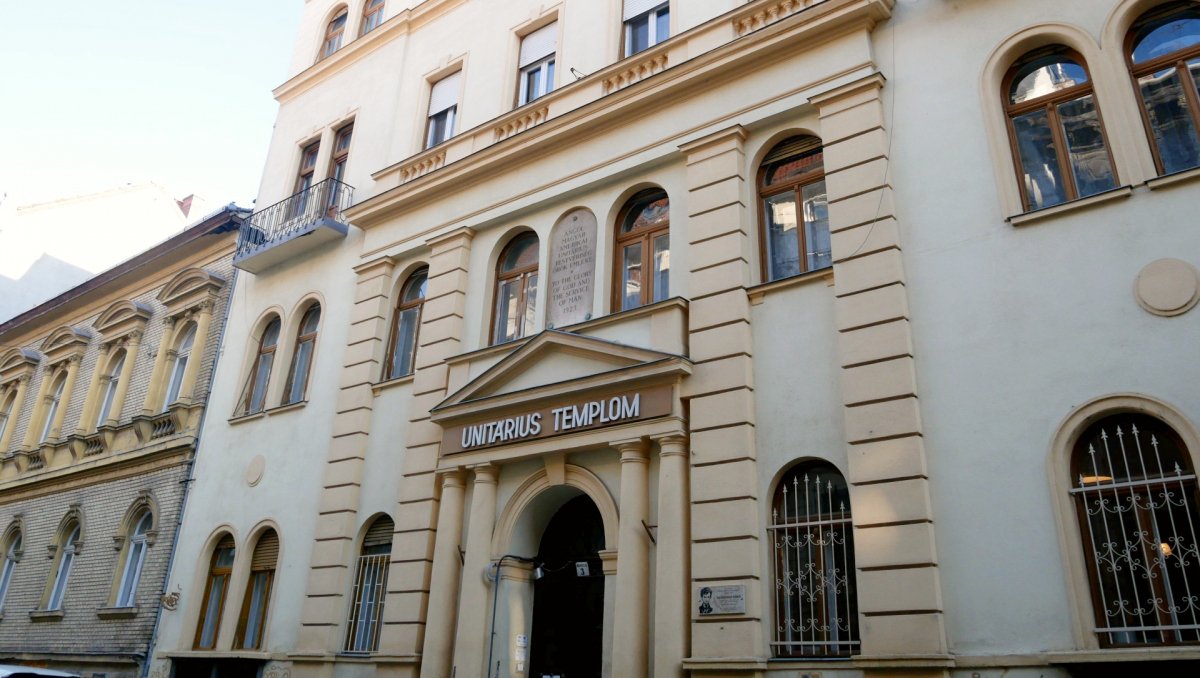


































Hozzászólások
Log in or register to comment!
Login Registration